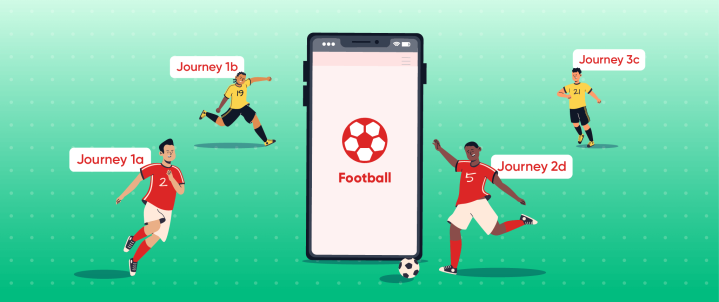Gone are the days when mobile games were just a source of entertainment. Today, they are a billion-dollar industry, with approximately 2.2+ billion mobile gamers around the world.* With the rise in competition, it’s becoming increasingly challenging for gaming studios to stand out in the market.
As a result, personalization has emerged as the key to successful mobile game marketing and growth.
Personalization allows gaming studios to tailor their marketing campaigns to each player’s unique preferences and behavior within the app. It helps to create a more engaging experience for the players, which ultimately leads to higher customer retention and lifetime value (LTV).
In this article, we’ll discuss the changes happening within mobile games and how they are improving and changing player personalization.
The Importance of Personalization in Mobile Game Marketing
Personalization is critical to the success of mobile game marketing. It helps create a more customized experience for players, and allows gaming studios to understand their players’ preferences and behavior so they can tailor marketing campaigns and app development accordingly. As a result, players feel more connected to the game and are more likely to engage with it.
Personalization also helps to increase customer retention and LTV by creating a more loyal customer base. Knowing a player’s unique preferences and behavior allows game studios to offer targeted promotions and events. And players who feel that the game is tailored to their needs are more likely to remain loyal to the game and become advocates for it.
The Changes Happening in Mobile Game Personalization
Huge Stores of Data
The advancements in technology have led to significant changes in mobile game personalization. Today, game developers have access to a vast amount of player data that can be used to understand player behavior and preferences. This data includes information about the players’ in-game behavior, demographics, location, and social media activity.
Using this data, game developers can create individualized campaigns. For instance, give a player who frequently purchases in-game items a discount on future purchases. Or send social media-specific promotions to a player who is active on social media.
Unfortunately many gaming apps are not able to access more than 90 days lookback data due to expensive data costs when they access high frequency events. This limits personalization to just the most recent activities the player has done. Marketers across a variety of industries are challenged in how to access and utilize data in an efficient and cost-effective manner, and CleverTap’s TesseractDB was built specifically to address this issue.
Predicting and Recommending via AI
Moreover, gaming studios are now using artificial intelligence (AI) and machine learning (ML) algorithms to analyze the vast amount of data and make predictions about each player’s behavior. These algorithms can predict which players are more likely to make purchases, which events they are more likely to participate in, and which promotions are most likely to be successful. Those marketers who have built-in AI engines to recommend personalized offers to players are the ones who will be able to scale their campaigns to millions of users and grow their brands.
More Expensive CPI
It’s not all a bed of roses. The downside is that changes in privacy and regulations mean more expensive marketing costs.
Apple’s App Tracking Transparency (ATT) started it all, requiring all users to deliberately opt-in to tracking. This has all but killed targeted user acquisition for apps.* Going from a 100% opt-in rate for ads to about 30% means you can’t target in the same way you could before. What’s worse is this results in CPI (cost per install) going through the roof for gaming apps.
A quick search shows that the average mobile app CPI is $0.93 in APAC, $1.03 in EMEA, $0.34 in Latin America, and a whopping $5.28 in North America*. With such high CPIs, the ROI equation does not work for most gaming apps.*
The Secret Sauce That Is Personalization
Personalization has emerged as the key to successful mobile game marketing despite all these changes. Personalization is the key ingredient that allows gaming studios to create campaigns that are highly relevant and impactful because they’re tailored to each player’s unique preferences and behavior within the game. When used correctly and consistently, personalizing the player journey will lead to an engaged and loyal customer base that generates growth and positive ROI. The perfect win.
Subharun Mukherjee 
Heads Cross-Functional Marketing.Expert in SaaS Product Marketing, CX & GTM strategies.
Free Customer Engagement Guides
Join our newsletter for actionable tips and proven strategies to grow your business and engage your customers.














































